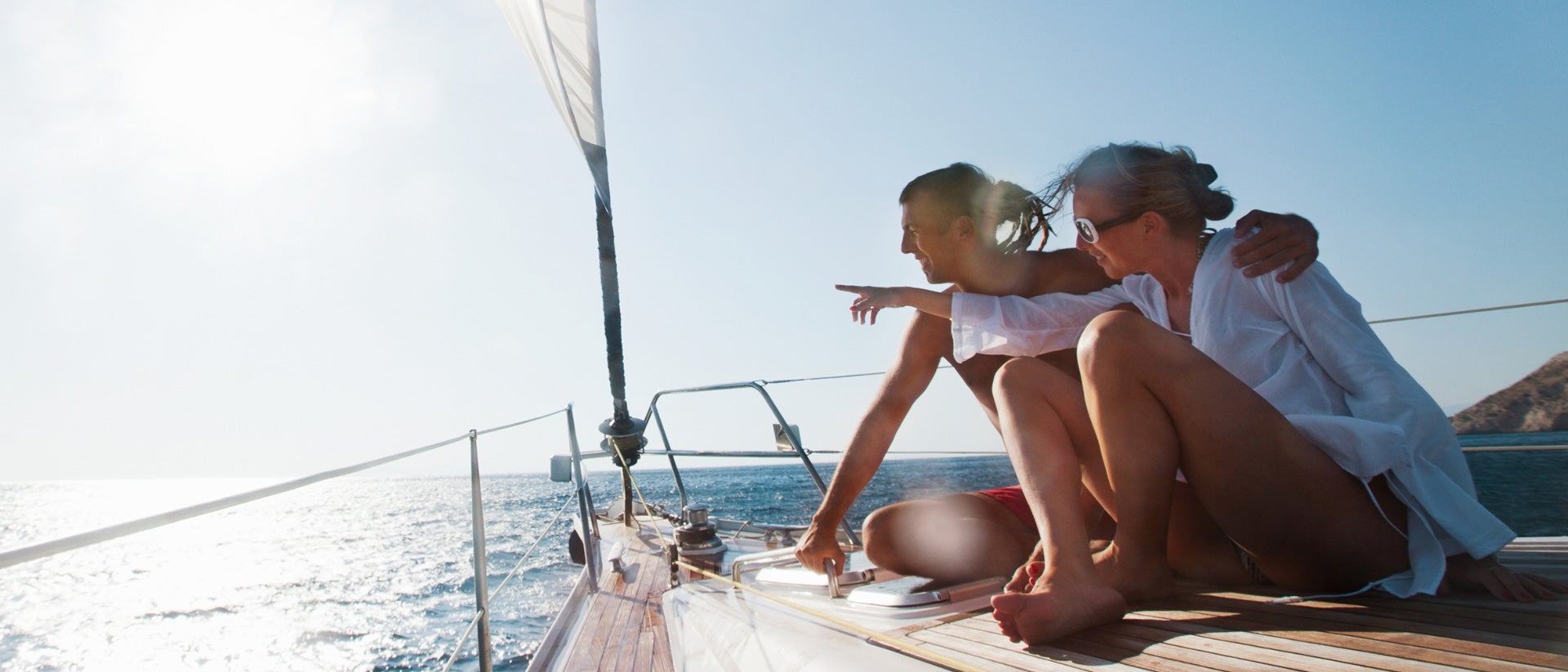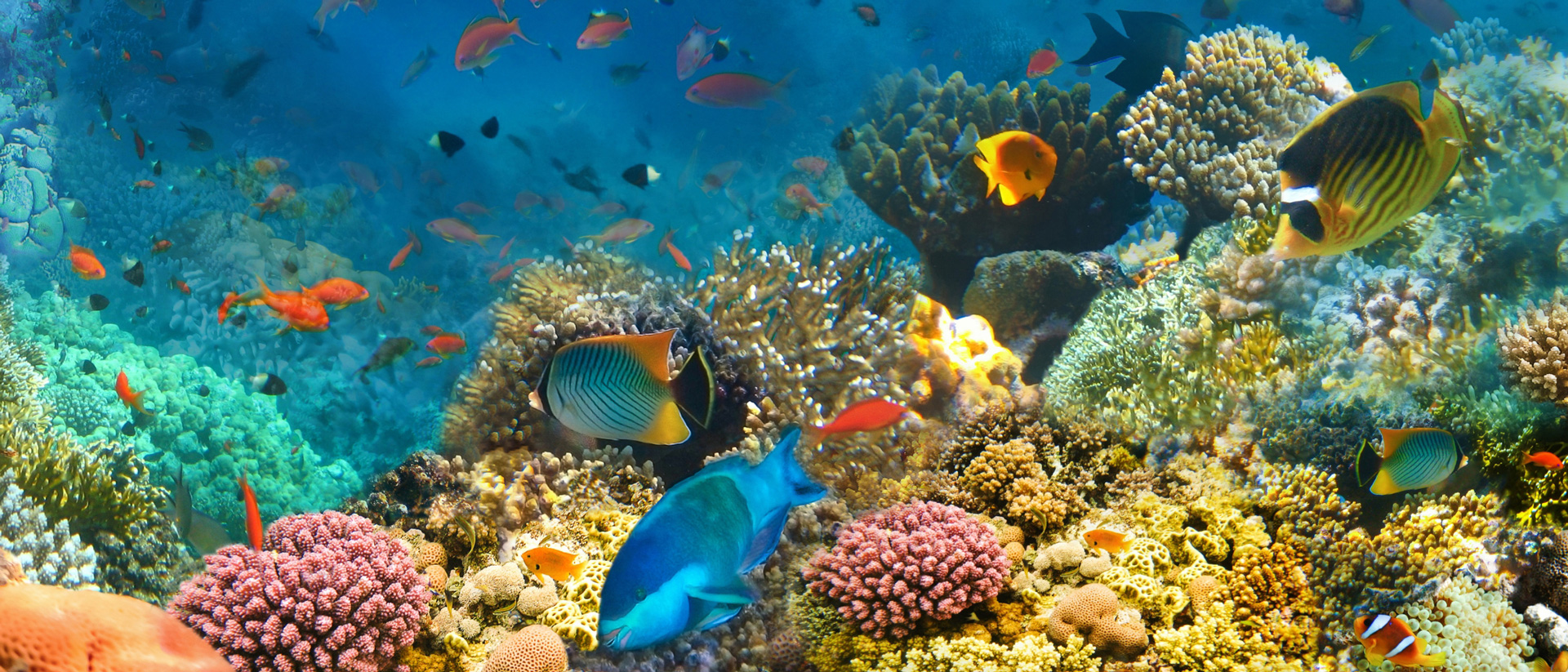As the world’s top sailing tourism company we’re making sailing holiday more accessible for everyone with more destinations than anyone else. That means that together, we have the potential to make a real difference for the environments that we sail. No matter where you choose to sail, chartering puts you in close contact with nature’s most fragile ecosystems.
We each have an important role to play in sustainable sailing and ensuring the future of our oceans, seabeds and reefs. While on holiday, there are some small actions that can be taken to help reduce our impact – and prevent minor blunders that can be hazardous to the environment over time, particularly when repeated by thousands of visitors.

From shopping locally to conserving water, it only takes a little bit of effort to make greener, cleaner choices while sailing. After all, the pristine natural beauty of the bays, reefs and beaches is what makes visiting and sailing in these destinations so special.
Here are our top sustainable travel tips to give back to the planet on your next sailing journey.
10 Sustainable Travel Tips: How to master sustainable sailing

1. Harness wind power
This tip may sound obvious, but one of the best ways to help the planet while sailing is to hoist the sails! And it’s this more eco-friendly way of sailing that lets you slow down and discover the beauty in the journey. Wind can get you almost anywhere you want to go, especially if you plan ahead by proactively tracking wind conditions. Plus, this tactic makes for a more authentic sailing experience.
To help read the winds, download a few sailing apps to your phone before your departure. Navionics, PredictWind, and Windy are great options for planning custom routes based on anticipated winds.
2. Avoid unnecessary energy usage
Using your sails as much as possible isn’t the only way to reduce your energy consumption. In addition to keeping your engine off while the sails are up, try your best to only run the generator when needed.
One of the main areas to focus on is the air conditioner. By opening up the hatches to enjoy natural breezes, you’ll find yourself needing to power up the A/C less often! Boats can cool down quite quickly, so give this method a go before powering up the air.
If you can manage, leave optional items like hair dryers and electric razors at home.

3. Never throw anything overboard
The sea is not a rubbish bin, so never discard anything into the water. It puts marine life at serious risk, especially with plastics! Even rubbish that seems harmless (like food scraps) should stay on the boat until you can dispose of it safely.
To avoid lingering odors, make it a habit to empty all trash bins every time you stop by a harbour or marina.
In windy conditions, it’s also a good idea to secure loose items like inflatable floats, napkins and paper.
Finally, sustainable sailing means picking up any rubbish you see, even if it’s not yours. Going above and beyond to throw away floating trash is an easy way to give back to the planet!
4. Minimise plastic usage with reusables
An easy way to keep rubbish from piling up or ending up in the sea is to bring reusable water bottles, plates, silverware, and bags. Provision your yacht with large gallon bottles rather than single use sizes. When packing for your holiday, ask each or your travel crew to bring their own insulated cup or bottle, which also makes it easy to keep track of which drink is yours!
The goal is to avoid polluting the ocean with plastic, so if you do need to bring disposable items aboard, prioritise paper or biodegradable materials. Bonus points if your items can be recycled!
5. Always be careful with chemicals
It should go without saying to only empty your holding tank in approved areas, but allow us to say it again. Holding tanks should never be emptied near beaches, swimming areas, or pockets of marine life!
If you have to add fuel to your yacht, pay close attention to avoid spilling anything into the water. And, like food scraps, never pour liquids into the sea.
6. Conserve water
At sea, fresh water is a precious resource. From showers to dishes, water consumption should always be conservative.
Sustainable sailing pros emphasize using showers, bathrooms, and other water facilities on land whenever possible. Shower products can contain harmful ingredients that impact marine life and coral reefs.
Many marinas offer fresh water shower facilities, and it can be a nice treat to go ashore to freshen up.

7. Take care around coral and sea life
When it comes to protecting marine life, there are many ways to reduce your impact on the environment.
For example, a mooring buoy will always be safer for wildlife and seabeds than anchoring. If you do have to anchor, be mindful of seabeds and coral. If you’re new to sailing, a general rule of thumb to follow is to drop your anchor in sand or mud.
When swimming and snorkelling near reefs, take extreme care not to touch, kick or stand on coral. Corals are slow growing and very fragile, and a curious touch or accidental kick with your fin can do damage or even kill entire colonies of coral.
8. Invest in reef-safe sunscreen
Unfortunately, most generic sunscreens contain toxic chemicals that damage marine life. Green algae, coral, mussels, sea urchins, fish, and dolphins are just a few of the many organisms that standard sunscreen can harm, or even kill. Even if you wait for sunscreen to dry before diving in, the formulas can transfer to the water quite quickly.
While stocking up for your trip, look for sunscreens that are labelled ‘reef safe’. Sun Bum, Maui Naturals, Coral Safe, COOA, Blue Lizard, and Supergoop are all brands with reliably reef-safe options! It’s also best to avoid aerosol sunscreen sprays, as most spray sunscreens contain harmful nanoparticles that stick to sand and wash into the sea.

9. Shop local
Sustainable sailing doesn’t stop when you go ashore. When you shop for groceries or dine at restaurants, prioritise local options over chains. In addition to boosting the local economy, buying local means fewer pesticides, less pollutants, and reduced carbon emissions during transport.
Even better, local food tastes better! The Mediterranean in particular is known for its world-class markets, so enjoy the fresh options while you can. And the Caribbean offers up fresh local produce in unique varieties you may not be able to find at home.
This sustainable travel tip also applies to shopping for other items like clothing and souvenirs. Supporting local artisans and merchants is always more eco-friendly!

10. Take only photographs, leave only footprints
This old adage applies to any form of travel, but you’ll be especially glad you followed it while sailing.
In practice, this means leaving your destination exactly as you found it. No matter how beautiful a seashell, artifact, or stone may be, don’t remove anything from the sea, land, or beach.
Instead, capture your favourite moments with a picture (or by shopping for local souvenirs). We’re all guests at sea, so do your part to preserve our oceans while sailing.
Sustainable travel with Dream Yacht
Sustainable sailing is one of the most rewarding ways to connect with the planet, unwind in paradise, and discover new cultural experiences around the world. Are you ready to plan a sustainable travel experience you’ll never forget?
No matter your level of sailing experience, our experienced charter planners are standing by to help. Set sail in the Mediterranean, Caribbean or one of our many other destinations.
Contact our team today to start planning your next sustainable sailing adventure.




